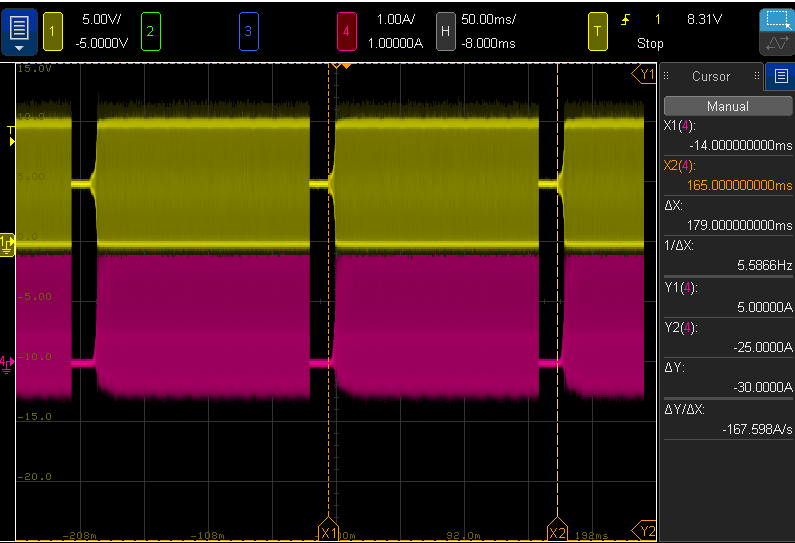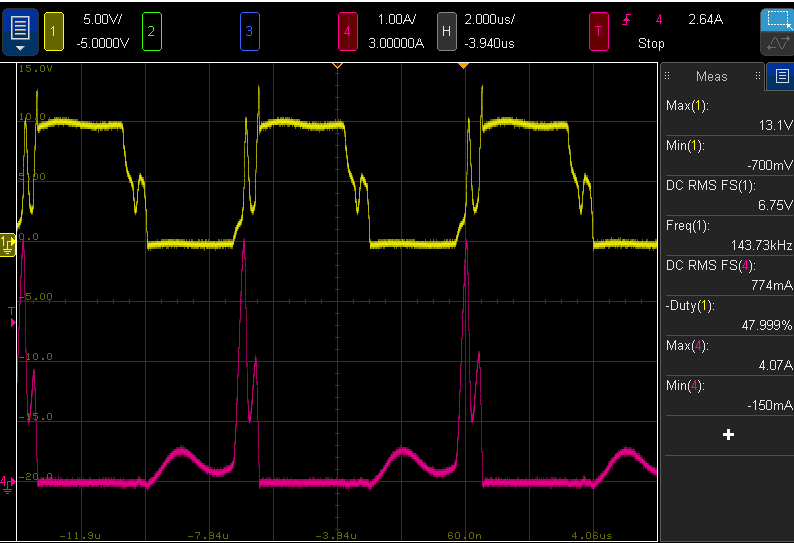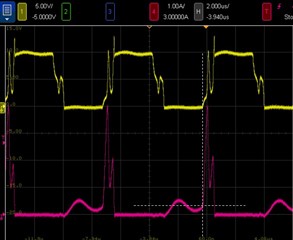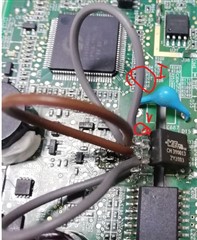Hi TI team,
We use SN6505A to make a isolation power.
There are some abnormal boards showed the power supply is restarted in cycle.
The board works normally at the beginning and after several hours when the temperature is high(Actually the temperature is about 40℃) it works abnormally.
CH1-D1, CH4- power supply input current

Does this mean the SN6505A protected?
I checked the datasheet, there are 2 protections: 1.7A current limit and thermal shutdown.
Which protection acts here? The SN6505A’s case temperature is about 91.6℃ under abnormal situation.
The EN pin is always high.
And we find that the voltage for D1/D2 is distortion.
CH1- D1, CH4- Current to D1

Is this high current caused by the transformer saturation or the transformer primary inductance and parasitic capacitance oscillation?
It seems that the high current occurs when the MOSFET is turned off.
The SN6505A's deadtime can be affected?
I infer the temperature causes the transformer's feature changed.
Looking forward to your reply.
Thanks.
Kylin




